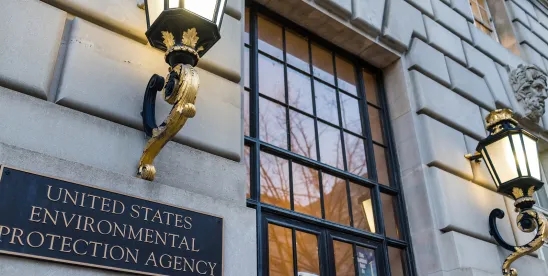After a few decades of uncertainty and “it’s-alive-it’s-dead-it’s-alive” swings, EPA’s “once in, always in” (OI/AI) policy is once again dead. And this time, it seems very dead.
On June 20, 2025, President Trump signed a Congressional Review Act (CRA) resolution that rejects a September 2024 rule adopted by the Biden EPA that had revived a narrowed version of OI/AI.
Given its long and controversial life and its little-heralded demise, it seems fitting to give OI/AI a eulogy.
OI/AI began life as an internal EPA policy memo in 1995. The policy provided a complex interpretation of “emits or has the potential to emit” as used in the definition of a “major source” of federally-designated hazardous air pollutants (HAPs): if a facility’s potential to emit HAPs ever exceeded “major source” thresholds after the first compliance date of any substantive requirements of a “major source” HAP standard applicable to that facility, the facility must comply “permanently” with such standard and other requirements for HAP “major sources,” even if the facility later were to reduce its potential emissions below the thresholds. In other words: once in, always in. For more background, see our prior articles here and here.
Over the years, the policy met increasing criticism. While the policy had the well-intentioned goal of reducing HAP emissions, the basis for it in the Clean Air Act (CAA) was not apparent. In essence, the policy was an extremely expansive interpretation of “emits or has the potential to emit” in the CAA’s definition of “major source” of HAP in CAA § 112(a)(1), with little to no support from the statutory text. This interpretation was a far cry from a plain-English reading of simple present-tense verbs. It was also at odds with the EPA’s plain-English reading of similar language used to define a “major source” for other CAA programs.
Further imperiling its longevity, the OI/AI policy was based solely on an internal EPA memo, without Administrative Procedure Act notice-and-comment rulemaking. The result, undoubtedly not intended, was a classic “trap for the unwary” that added further complexity to the CAA and introduced unpleasant surprises in regulatory compliance inspections and transactional due diligence.
The surge of regulated party discontent eventually led to a regulatory tug-of-war. The Bush II EPA made initial moves to undo the OI/AI policy, but these stalled. In 2018, however, the Trump I EPA withdrew the policy as not supported by the CAA, and then revised CAA regulations to expressly allow a facility to shed “major source of HAP” status by reducing its potential emissions. But OI/AI wasn’t dead yet. In September 2024, the Biden EPA adopted a final rule containing a more qualified version of “once in, always in” for facilities that emit certain higher-risk HAPs. That regulation has now been deep-six’ed by the June 2025 CRA resolution.
Per the CRA, future efforts to revive a similar OI/AI regulation would require Congressional approval. A revival also would likely face hostile judicial terrain, particularly in a post-Chevron/Loper Bright world (as many are aware, the Loper Bright decision overruled Chevron’s holding that where a statute is ambiguous, courts should give significant deference to the implementing agency’s interpretation). Even under Chevron, it’s not clear that the OI/AI policy would have survived: it’s not at all certain that the CAA language “emits or has the potential to emit” is ambiguous, so EPA’s interpretation seems unlikely to have received judicial deference under Chevron. A revived version of OI/AI would also need to run a gauntlet of the Supreme Court’s now-dominant textualism and skepticism regarding expansive statutory interpretations by agencies that substantially broaden their power.
Never say never – but this time, OI/AI for major sources of HAP seems dead and buried.




 />i
/>i

